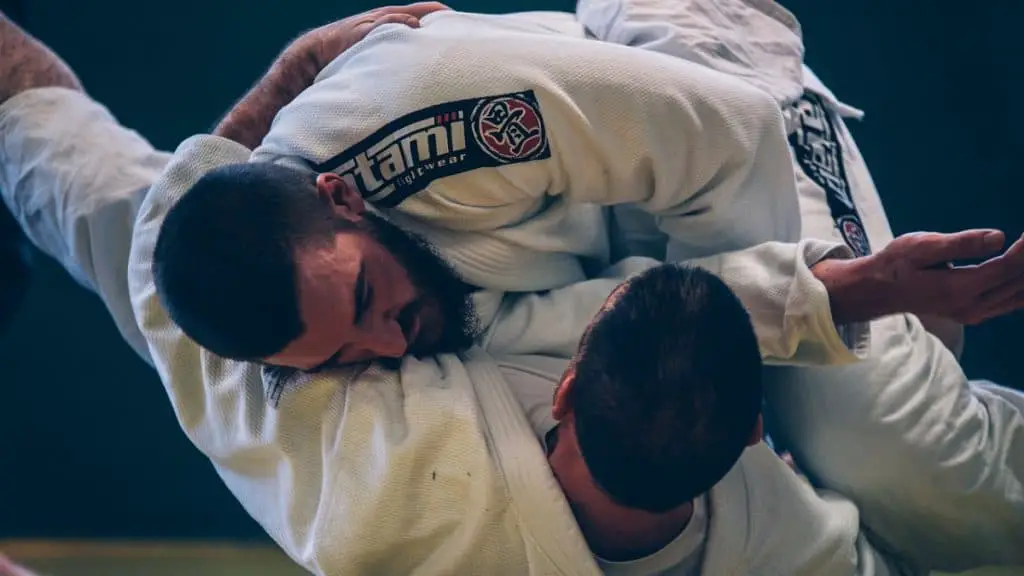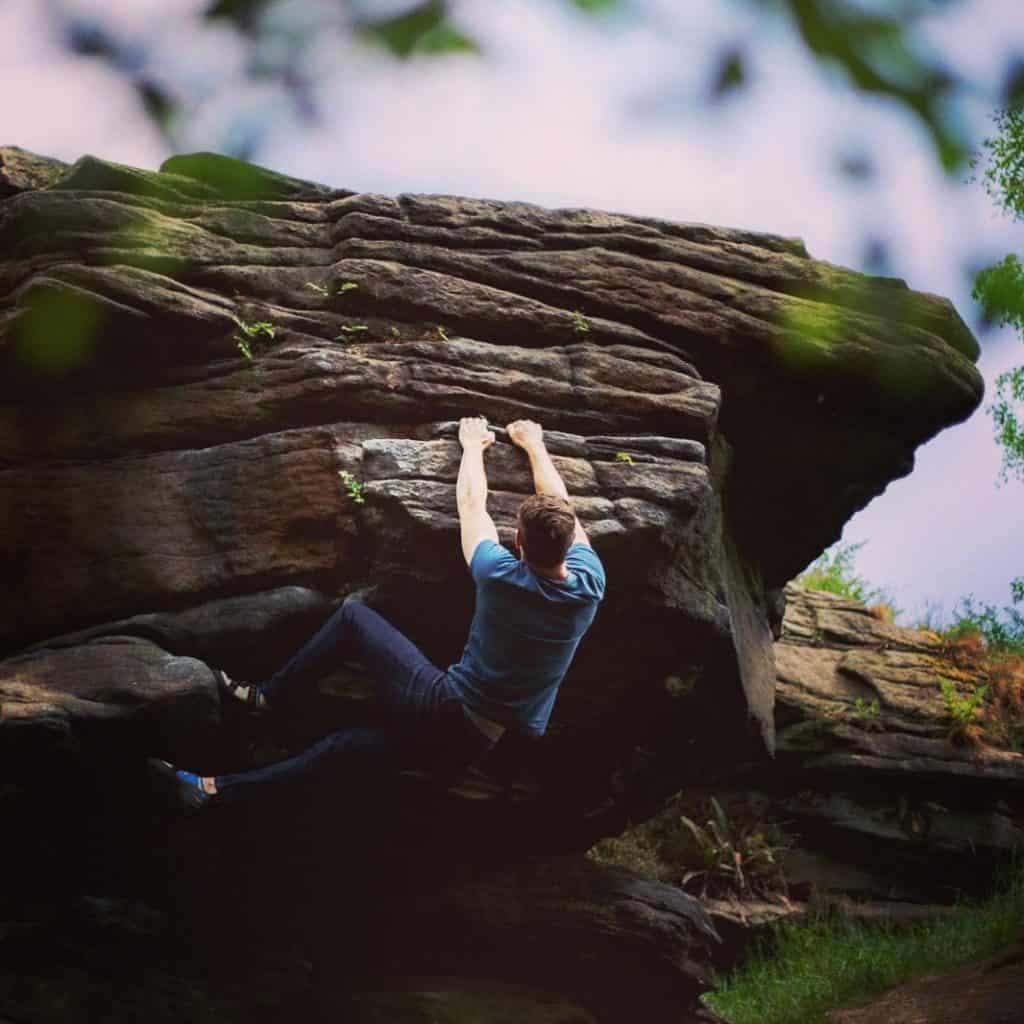
They may seem quite different from one another, but these two hobbies are both very mind and body focused. If you have an interest in both Brazilian Jiu-Jitsu (BJJ) and rock climbing but are not sure how they may complement each other, then this is the perfect article for you. As a blue belt in BJJ and avid climber for 5 years I can honestly say they complement each other very well. We will cover ways in which these two hobbies can intersect and benefit one another in this article.
So, what are the benefits of rock climbing for BJJ? Both Brazilian jiujitsu and climbing are quite physical and require mental and physical focus. BJJ is a fighting style that focuses primarily on grappling and submission holds which has a massive need for grip strength and forearm endurance. Rock climbing increases grip strength and overall fitness, which would be helpful for anyone learning BJJ. There are also many other ways these sports benefit each other.

Page Jumps
- How Does Rock Climbing Benefit BJJ
- How Does Training BJJ Benefit Rock Climbing?
- Similarities of BJJ and Rock Climbing: Mentally and Physically
- The Rise in Popularity of the Climbing and BJJ
- How Training Climbing and BJJ Can be Beneficial to Injuries
How Does Rock Climbing Benefit BJJ
The primary benefit of taking up rock climbing if you are already learning BJJ is the grip and upper arm strength training. However, the entire body is used in different holds and locks performed by BJJ athletes. Rock climbing is unique in that, unlike most sports, you are not focusing on one area but are instead training your entire body and increasing agility, focus, and the power of your core muscle group.
Cross-training with rock climbing and BJJ is convenient, and what one sport does not address health-wise the other will, which leads to a holistic improvement. In addition, rock climbing is especially helpful for learning BJJ because the entire body is exercised, which means the dominant side of a fighter is not more reliable than the less dominant side, which can often be the case for people who strictly workout through BJJ instead of cross-training.

The China University of Geosciences conducted a study on rock climbing. It determined that “rock climbing can significantly improve Handgrip strength, Lower limb pedalling power, Vertical Jump, Push-Ups, Pull-Ups, Sit-Ups, and Sit-and-reach” (Source). These are all power areas in BJJ as well, so rock climbing will have you physically fit in all the ways that are important to the grappling sport.
Here are just a few of the ways in which BJJ and rock climbing are similar in terms of training:
- Builds endurance
- Strengthens grip, forearm, and pulling strength
- Intense bursts of motion (upward for climbing, opponent parrying for BJJ)
- Trains mental focus
Rock climbing will allow you to keep on building muscles and mental acuity. A great thing about it is that you can climb pretty much anywhere so you can spend BJJ classes indoors and then enjoy the great outdoors with a boulder climb or natural rock wall. We have an excellent article about how to improve your endurance here.

How Does Training BJJ Benefit Rock Climbing?
BJJ is incredibly intense and both physically and mentally taxing. Usually, it involves intermittent periods of acute concentration and exertion, followed by break periods. For most events, there are around six matches. Being able to build up your stamina for BJJ will make it easier for you to climb wall routes. Most of the time is spent on the floor as opponents trade-off different holds, including elbow, ankle, wrist, and knee locks.
Submission and guard postures are used by fighters of BJJ, which will determine which part of the body is worked most and how rock climbing will be best able to improve form and posture. Body size, weight, personality, and skill level all play a part in determining which fighting posture a person decides to use. One fighter is usually on their back while the other is leaning over them, and while these positions can and will be reversed throughout a match, most players have certain stances they find most beneficial. Body core, leg, and arm strength are imperative to both forms.
Intense bouts of grappling within BJJ matches can last anywhere from a few seconds to several minutes with many consistent bouts, so being aerobically fit is essential. Rock climbing is an excellent source of exercise for building up endurance. Agility and overall fitness level are used in BJJ to suppress an opponent’s attempts to overcome a grapple hold or lock. Grip strength plays a big part in determining who will be the winner of a given match.
A study by the State University of Santa Catarina in Brazil found that “grip endurance seems to be an important factor for success in immobilizations, takedowns, throws, and submissions.” With “differences between maximum isometric handgrip strength of the right and left hands, in which the right hand had higher values than the left hand in Brazilian jiu-jitsu athletes.” This is an excellent way in which rock climbing can assist with overall strength as it works to strengthen both hand grips equally (Source).
Similarities of BJJ and Rock Climbing: Mentally and Physically
Both require a great deal of focus and mental calm. For rock climbing, you have to work through the problem of what route to take and moving from one ledge to the next. BJJ involves anticipating your opponent’s moves and working to counter them.
Psychology Today has an article on the mental benefits of BJJ and one of the main draws is the release of hormones that make you feel comforted and happy. This is triggered by physical contact. They say that “students of BJJ offer each other a powerful, affirming, accepting, and biologically-mediated experience, simply through the body-to-body contact that occurs throughout BJJ. Such contact triggers the release of neurochemicals in our brain and hormones throughout our body” (Source).
Climbing also fosters a sense of community and positive self-confidence. When at a climbing gym, it is easy to make friends with other climbers as you all work your way through the problems of any given wall. This kind of camaraderie also releases positive hormones. This good feeling can follow you through your entire day giving increasing optimism.
Positive mental benefits are enhanced by the overall increase in physical health that takes place automatically when you are doing sports like these where so much of the body is worked out each session. Mindfulness and better control over your movements and thoughts are all very good reasons to pursue either sport.
The Rise in Popularity of the Climbing and BJJ
Both rock climbing and BJJ became more prominent on the fitness scene in the 1980s and 90s, and recently, their popularity has skyrocketed. There are now rock climbing centers in most major cities. BJJ has exploded as not just a sport and hobby, but a lifestyle. Both of these provide positive mental and physical changes that can lead to a more rounded, healthier life.
Below are a few common reasons why BJJ and climbing have risen in popularity:
- You do not need to be especially fit to get started on either
- People can use it as a way to boost self-confidence
- Both involve a fun social environment with supportive local and online communities
There is very little knowledge needed to get started in either, and they are both affordable. The ease of accessibility is one reason why they have gained such vast followings. When it comes to starting a new sport or hobby, sometimes just figuring out where to start can be daunting, but rock climbing and BJJ are simple to start. Most cities have multiple locations that offer rock climbing and BJJ classes.
How Training Climbing and BJJ Can be Beneficial to Injuries
There are a lot of common injuries that can take place when training for either sport. Fortunately, when you are unable to train with one of them, then there is a likelihood that you can train with the other, meaning that you can continue to keep yourself healthy and fit as your injury heals.
The Department of Sports Orthopedics in Germany researched climbing injuries and found that “acute injuries in rock climbing either come from a fall onto the lower leg or from performing a hard move and injuring the upper extremity.” Tendon breaks and tears, strains, and micro-stressors of the bone are also quite common (Source).
While climbers are more prone to injury their extremities, people who compete in BJJ had joint problems more commonly than other afflictions. When a study was conducted to determine injury patterns for BJJ participants, they discovered, “the knee and elbow were the joints most susceptible to injury” (Source).
While it is not great to push your body while it is healing, it is possible to take low-stress courses and training. If you injure an elbow or knee while performing BJJ, then after some time to rest, it is possible to climb low-level walls while it is still healing before you can get back to BJJ. Alternatively, if you injure your toes while climbing, then you can always use the rest of your body to practice different BJJ forms.
